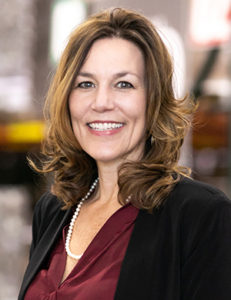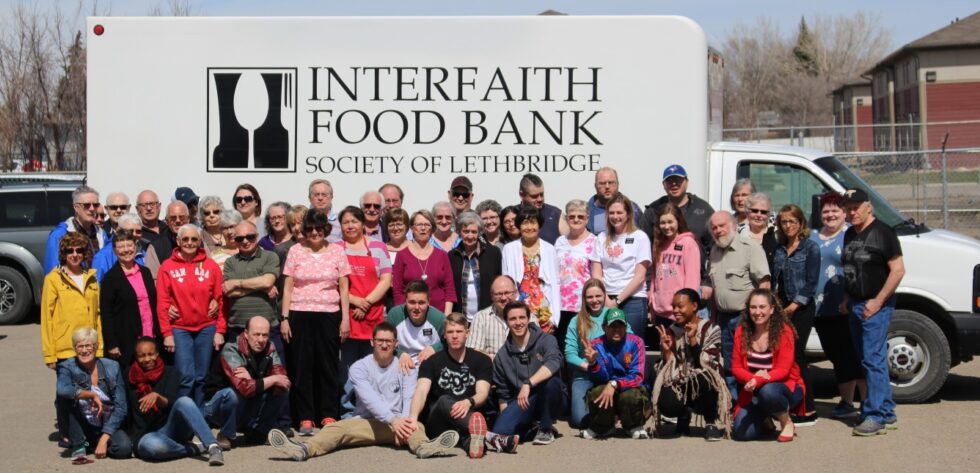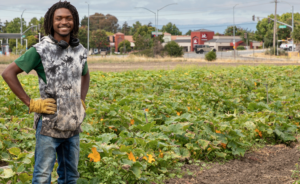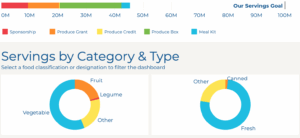These days, it is hard to find a food bank that is not making adjustments to pay or thinking about it, especially for lower-wage workers.
Food banks across the country and in Canada report undertaking compensation studies and/or instituting wage increases to ensure employees are getting fair pay and can afford basic costs of living, like food and shelter, in their areas.
The momentum is in tune with basic business and economic pressures like today’s more competitive job market and the impact of inflation on workers. Just as important, it puts food banks in position to set a positive example about the ability of living wages to fight poverty and food insecurity in their communities.

“Our work to prevent hunger begins within our own organization,” said Stacy Dykstra, CEO of Regional Food Bank of Oklahoma, in announcing the food bank’s recent move to a base pay of $18.47. The new policy raised the pay of 74 people (out of about 130) who previously were not earning a living wage, Dykstra noted.
Interfaith Food Bank Society of Lethbridge, located just above the Montana border in the Canadian province of Alberta, followed the same philosophy in its recent move to a $19 an hour base wage. “As an anti-poverty organization, we cannot put our own staff in poverty,” noted Danielle McIntyre, Executive Director.
Washington-based Northwest Harvest is also aware of the need to lead by example. “We are doing many things in the comp arena to reflect how we would like society to function,” said Thomas Reynolds, CEO, in an email. That includes a cost-of-living adjustment each year that is a flat amount versus a percentage, allowing, for example, someone who earns $40,000 a year to get a larger percentage increase versus someone earning $80,000.
In the past, passion for the mission was widely viewed as an adequate substitute for lower pay in the nonprofit sector. But that stance has become less acceptable as the pandemic has amped up the volume of hunger relief work, while also shining a light on its essential nature.
The pandemic also illuminated society’s inequities, causing more food banks to scrutinize how their own internal practices might be contributing to them. The Next Shift campaign from Closing the Hunger Gap, announced in March, is in sync with this momentum, emphasizing the need for “thriving” wages for food service employees as a crucial first step in fighting hunger.
At many food banks, changes in pay have been a long time coming. Interfaith of Lethbridge, for example, knew that it had “lucked out for a long time” in counting on people who “worked for the cause, not a paycheck,” McIntyre said. In 2021, after completing renovations to its building that had been tying up resources, Interfaith was ready to focus on pay.
Now its annual operating budget for salaries is up by about $120,000 to a total of $470,000, McIntyre said. “It takes time to get there,” she said, noting that Interfaith was in operation for 35 years before it began thinking more strategically about its human resources.
When Susannah Morgan joined Oregon Food Bank ten years ago, minimum wage at the organization was tied to 185% of the poverty level for a family of two (the level at which a family no longer qualified for SNAP). While an across-the-board increase occurred a few years later, real gains came during the pandemic when all on-site workers received a $7.50/hour increase in hazard pay. To alleviate workers’ concerns about what would happen when their hazard pay went away, the food bank recently approved a new organizational minimum wage of $21.50, which will rise to $23 later this year. “Our internal goal is that we want to walk this talk,” said Morgan, the food bank’s CEO.
Dykstra of Regional Food Bank of Oklahoma is preparing to go a step further by prompting local businesses to also embrace higher wages. To that end, the food bank is convening meetings with area businesses (starting with those on its board) and the Chamber of Commerce to discuss the topic of living wages. “I think businesses can play a key role in helping us solve this problem” of hunger, Dykstra said. “I’d sure love to see in a couple of years that businesses had invested millions back into their own communities” via living wages.
One difficulty in determining an adequate level of pay is that it depends on so many factors, including the local cost of living, as well as assumptions about what types of lifestyle costs should be included in a living wage. Interfaith of Lethbridge benefitted when the Alberta Living Wage Network issued a report on the local living wage at the end of 2021, confirming the food bank’s own findings about an appropriate local living wage.
Julie Butner, CEO of Tarrant Area Food Bank, looked to various resources, including Feeding America’s Network Activity Report and county-level data from United Way, to determine proper wage levels, which were “really low” when she arrived at the food bank two years ago, she said. Following a number of salary increases, including a 4% across-the-board cost-of-living adjustment at the end of April to address inflation, the minimum wage at Tarrant is now $19 (and $22 for drivers).

Second Harvest Food Bank of Southern Wisconsin took into account pay grades from a variety of for- and non-profit companies in its recent compensation study, said Michelle Orge, President and CEO, ultimately determining that the food bank’s minimum pay should be $20 an hour. “We didn’t want to pay well as a non-profit,” Orge noted. “We wanted to pay competitively.”
The food bank also took advantage of an opportunity to “share power” by inviting a cross-departmental team of representatives (none of them supervisors) to determine the value of different levers, such as experience, tenure and education, in assessing an individual’s pay. “We wanted to make the process as objective as possible,” Orge said.
Moving to higher wages makes good business sense, food banks are finding. Because it relies heavily on volunteers, Interfaith of Lethbridge needs its staff of 12 to be supportive and consistent, McIntyre said. Before, “we had wasted time and money hiring and rehiring, and training and retraining,” she said, pointing to volunteer resources and donor dollars that were lost. With higher wages, the food bank is also enjoying better employee morale and retention, and seeing higher-caliber candidates applying for jobs.
Donors and funders, who have long been wary of paying into administrative costs rather than the mission, are also coming around to the importance of improving pay, food bankers say. “We’d like to think that our donors would want us to have the most effective, best folks possible to get this work done,” Orge said, adding, “Investing in the team is investing in the mission.” – Chris Costanzo
Like what you’re reading?
Support Food Bank News












